4 min read
2014-Mohamed-Cell
2022-05-21
A Systematic Analysis of Biosynthetic Gene Clusters in the Human Microbiome Reveals a Common Family of Antibiotics
为什么读这篇文章
- 了解Machiael A Fischbatch之前做的工作主要是什么
- 用genomic mining来挖掘microbiota-dependent metabolite的经典文章
- 主要是和2015年的Science review一起连读
- 了解一些基础背景
Introduction
- 可扩散和细胞相关的小分子经常介导host-microbe interaction, 一系列的例子
- 是否存在大量细菌产生的小分子可以mediate microbiota-host interactions
- 由于微生物组的复杂性和巨大的编码潜力,需要一个系统的方法去探究small-molecule-mediated interactions between humans and their microbiota
- 本文通过系统鉴定和分析BGC来探究人类微生物组生物合成的可能性
- 与以往的方法每次聚焦于1个化合物或者菌株不同,本方法可以全面地从数千个人类微生物菌群中分析BGC。通过人类的宏基因组样本中分析BGCs,可以评估这个community编码小分子的能力,为进一步分析提供线索。
- 为了验证这个方法,他们研究了一个广泛存在于类人类微生物中的基因簇家族,包括表征他们编码的小分子产物以及它们在人体位点和个体
Result
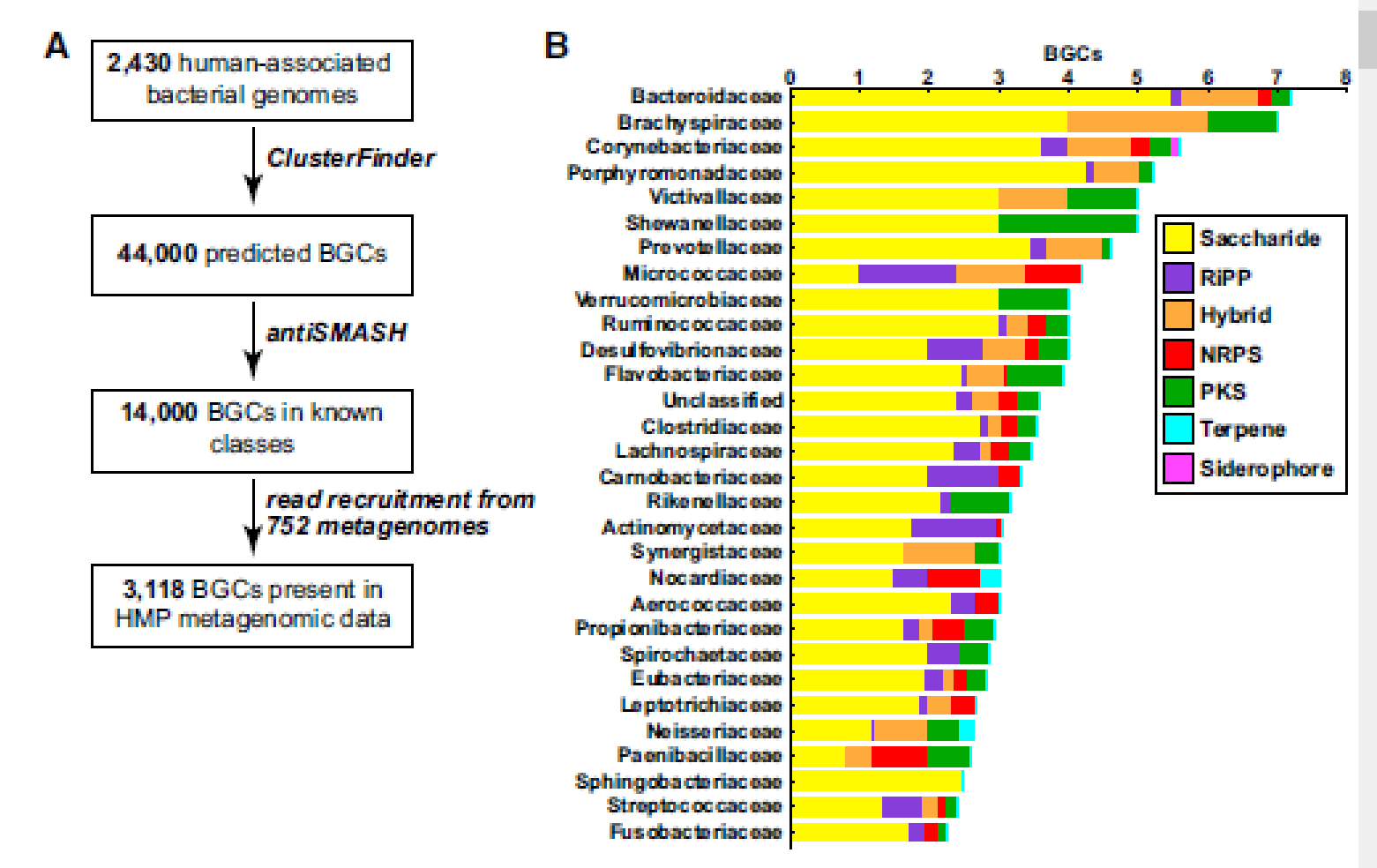
- 首先使用ClusterFinder去分析了2430个人体不同部位的宏基因组,发现了>14000个BGC,包括了不同的小分子类别
- 考虑到广泛分布在人群中的BGCs编码的小分子化合物更有可能是保守地接到microbe-host以及microbe-microbe相互作用,他们把研究目标重点放到了healthy indivituals中共有的BGC
- 将人群微生物组计划中的752个宏基因组样本match这>14000个预测的BGC,发现3118个biosyntheticBGC存在于这些样本中,用于后续的进一步分析
An Overview of BGC Types and Distribution in the Human Microbiome
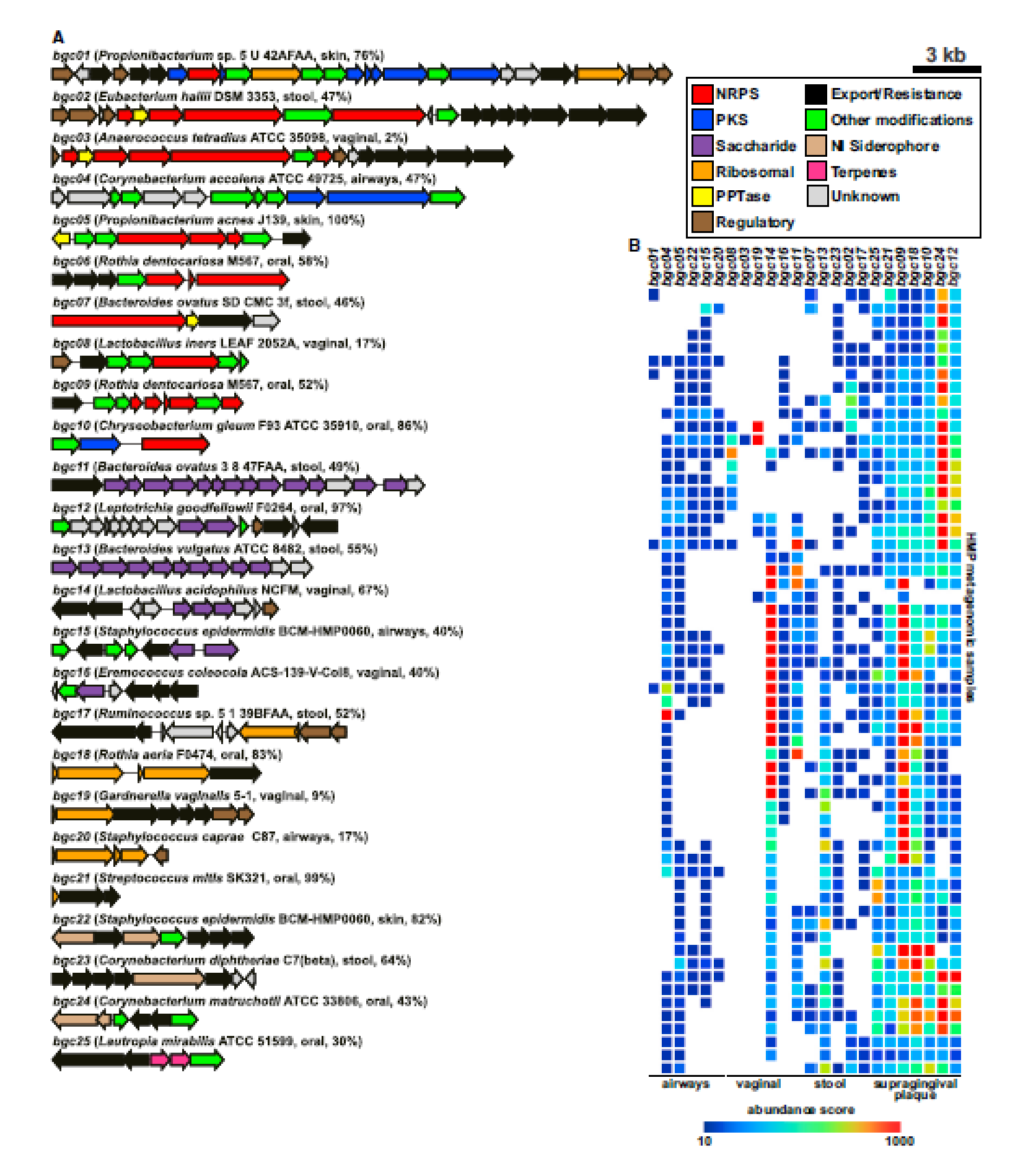
- 分析这些matched到的BGC在人群样本中的分布和分布
- gut and oral cavity有明显更高的分布,相比于其他部位
- gene cluster class在人体和非人体相关的bacteria上面存在显著不同的分布,尤其是saccharides
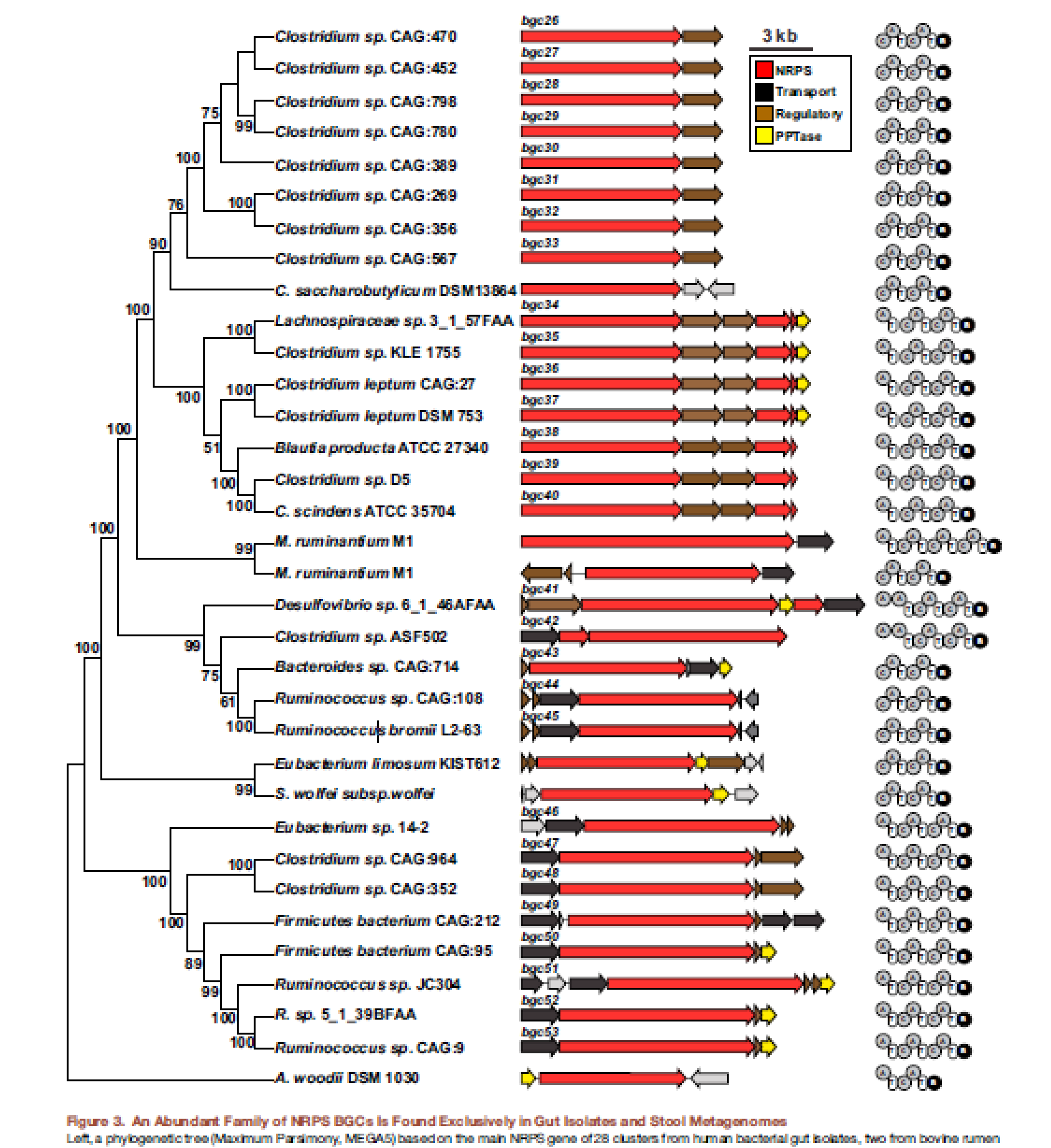
- 非核糖体多肽合成酶 nonribosomal peptide synthetase (NRPS) 是广泛的存在于HMP样本中,尤其是粪便样本,暗示其重要性
- 这些NRPS存在的类别特点,及预测的核苷酸区域编码domain特点(芳香族氨基酸)
Family of Complex Polyketides from Oral Actinobacteria Are Widely Distributed in the Oral Cavity
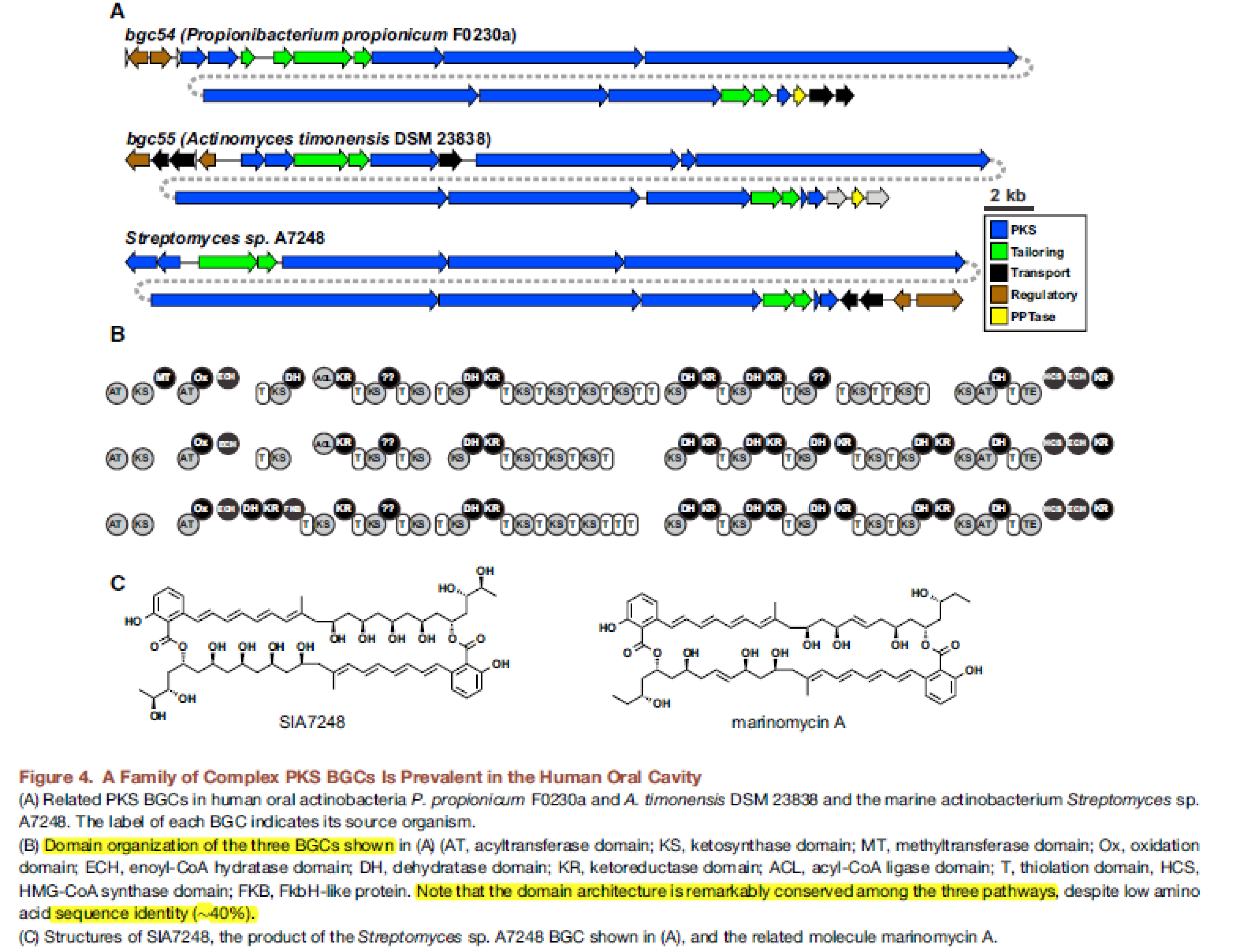
- 聚酮合酶 polyketide synthase (PKS) gene 广泛分布在口腔上,这些写marine BGC很像,表明可能编码相似的代谢物
Bacteroidetes Saccharides Are Predominant and Variable in the Gut
Ribosomally Synthesized, Posttranslationally Modified Peptides Are among the Most Widely Distributed and Variable BGCs Encoded by the Human Microbiota

- Modified RiPPs 普遍存在于人类菌群中,主要是以下三个亚类:
- lantibiotic: 大量存在于Fiemixutes and Actinobacteria中,存在于所有人体主要部位
- thiazole/oxazole-modified microcine:口腔
- thiopeptides:硫肽类抗生素
- 是否能够在宏基因组数据中发现从未被报道过的thiopeptide gene cluster
Discovery and Characterization of a Thiopeptide from the Human Microbiome
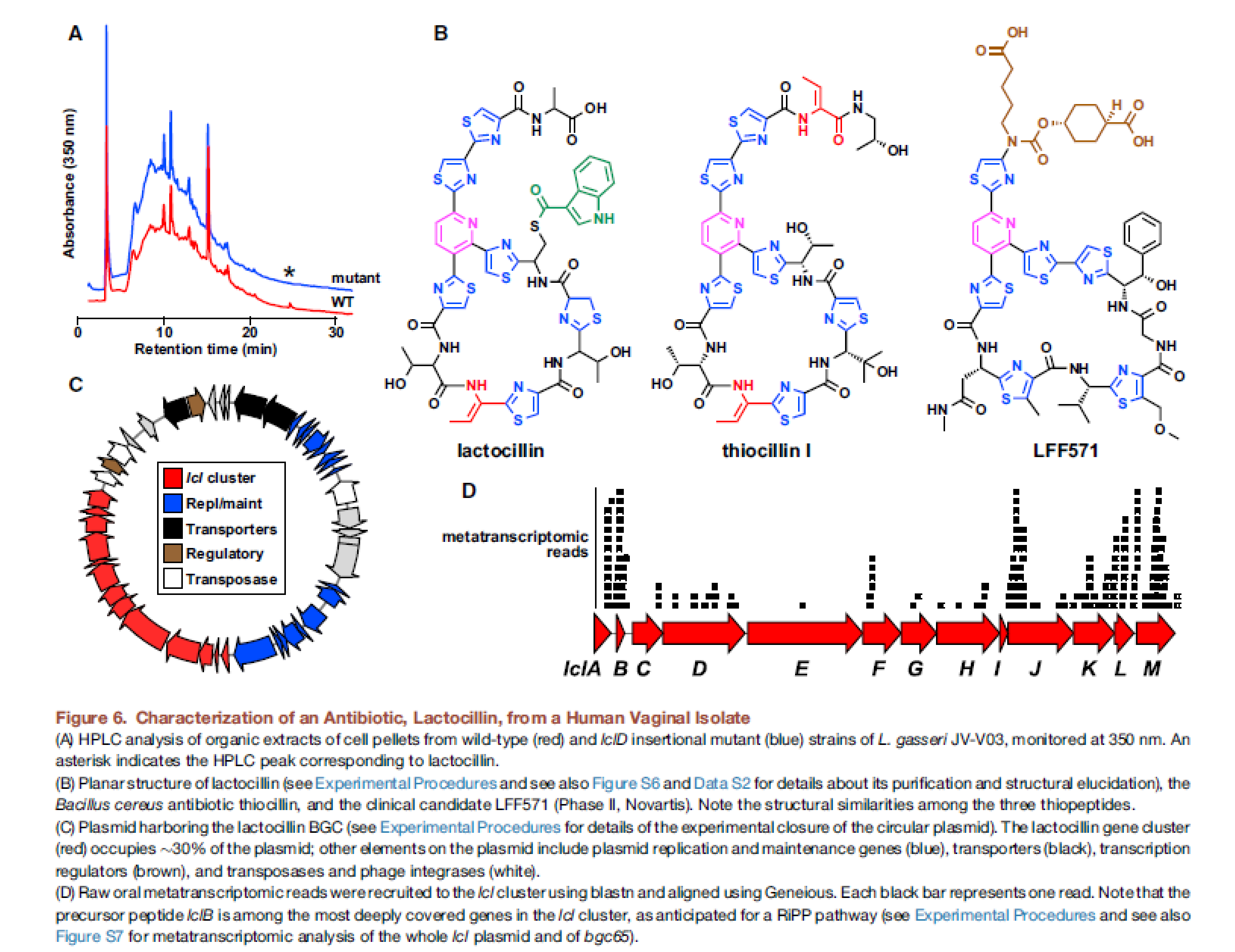
- 开始纯化和解析thiopeptide的结果,13个thiopeptide BGCs中有3个BGC是对应已知的thiopeptides
- 从可操作性上中选择了bgc66这个基因簇,HPLC分析发现bgc66有一个peak在突变株中丢失,HRMS计算分子式,表示至少存在1个以上的posttranslation的modification
- 然后经过一系列的天然产物分离,HPLC, 1D and 2D NMR, MS/MS和MSn,同位素标记来确定最终结构
- 与其他lactocillin相比,进行纯化/活性分析,发现对一系列的菌具有抗性Staphylococus aureus, Enterococcus faecalis, Gardnerella vaginalis, and Corynebacterium aurimucosum, but not Escherichia coli
- 通过宏基因组分析证明这个gene clusters是人类样本中是广泛表达的
Discussion
- 系统的方法从human isolates的metagenomic和metatranscriptomic中发现BGC
需要学习的点和感受
- 这是一篇从genome出发去发现Microbita metabolite的经典文章
- 整篇文章的思路其实是比较简单的,从BGC发现总览,进一步分类别和部位进行讨论和发现,最后落脚在一个具体的类别Modified RiPPs,并分离出lactocillin,确认结构,和抗性
- 这个文章的思路很方法学,从广泛的宏基因组分析中获得信息,然后聚焦到一个点上,做深入的鉴定和发现,证明实用性。难点是数据的阐释,以及这个抗生素的发现
- 需要学习的技术:宏基因组发现BGC,宏转录组分析





